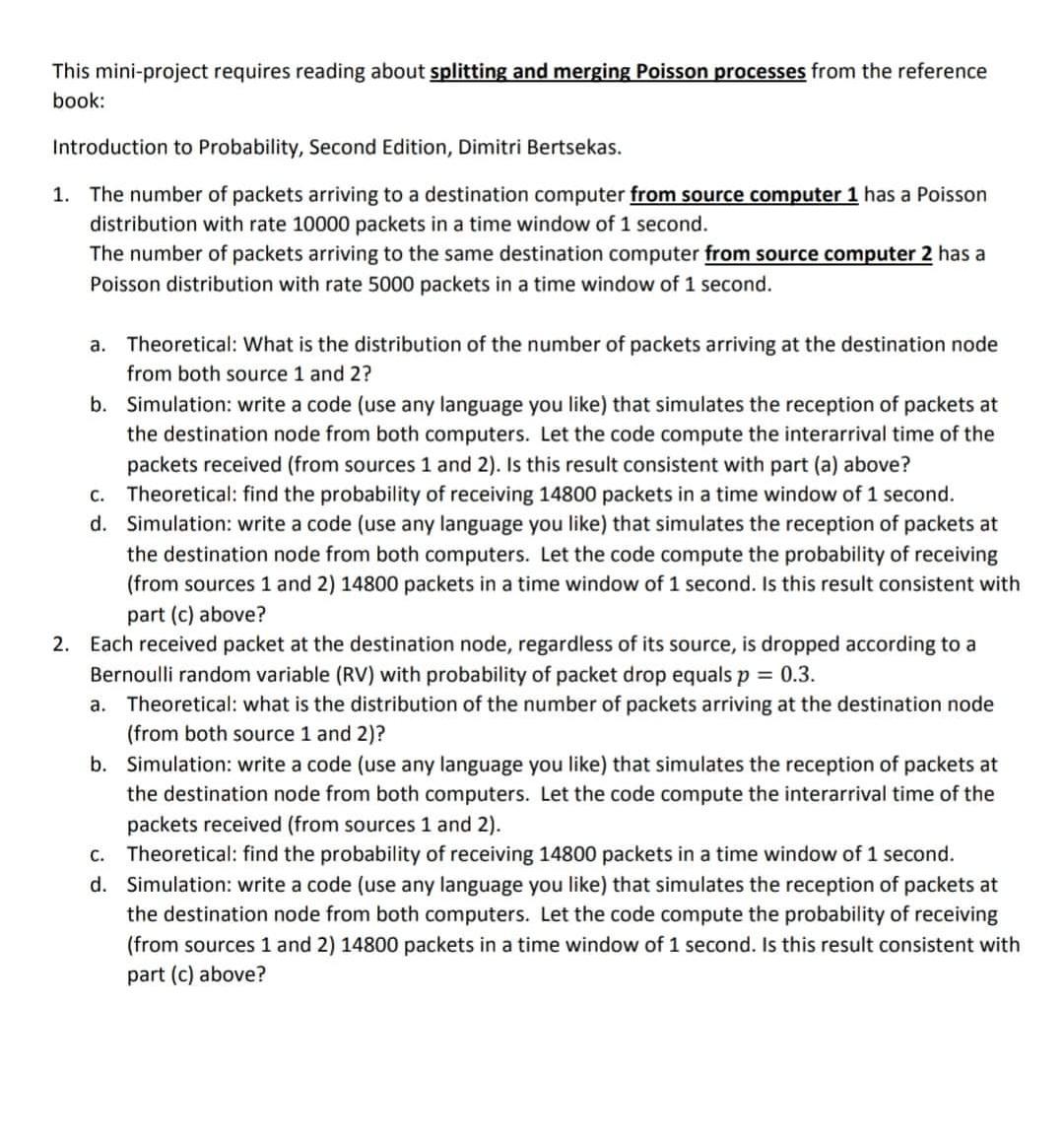Answered step by step
Verified Expert Solution
Question
1 Approved Answer
This mini-project requires reading about splitting and merging Poisson processes from the reference book: Introduction to Probability, Second Edition, Dimitri Bertsekas. 1. The number of


This mini-project requires reading about splitting and merging Poisson processes from the reference book: Introduction to Probability, Second Edition, Dimitri Bertsekas. 1. The number of packets arriving to a destination computer from source computer 1 has a Poisson distribution with rate 10000 packets in a time window of 1 second. The number of packets arriving to the same destination computer from source computer 2 has a Poisson distribution with rate 5000 packets in a time window of 1 second. 2. a. Theoretical: What is the distribution of the number of packets arriving at the destination node from both source 1 and 2? b. Simulation: write a code (use any language you like) that simulates the reception of packets at the destination node from both computers. Let the code compute the interarrival time of the packets received (from sources 1 and 2). Is this result consistent with part (a) above? C. Theoretical: find the probability of receiving 14800 packets in a time window of 1 second. d. Simulation: write a code (use any language you like) that simulates the reception of packets at the destination node from both computers. Let the code compute the probability of receiving (from sources 1 and 2) 14800 packets in a time window of 1 second. Is this result consistent with part (c) above? Each received packet at the destination node, regardless of its source, is dropped according to a Bernoulli random variable (RV) with probability of packet drop equals p = 0.3. a. Theoretical: what is the distribution of the number of packets arriving at the destination node (from both source 1 and 2)? b. Simulation: write a code (use any language you like) that simulates the reception of packets at the destination node from both computers. Let the code compute the interarrival time of the packets received (from sources 1 and 2). C. Theoretical: find the probability of receiving 14800 packets in a time window of 1 second. d. Simulation: write a code (use any language you like) that simulates the reception of packets at the destination node from both computers. Let the code compute the probability of receiving (from sources 1 and 2) 14800 packets in a time window of 1 second. Is this result consistent with part (c) above? Deliverables: Submit a report that has the following components: 1. Detailed answers and explanations to the theoretical parts. 2. A file that has your code. 3. Discussion. Important: All deliverables should be submitted in one compressed (rar or zip) file
Step by Step Solution
There are 3 Steps involved in it
Step: 1

Get Instant Access to Expert-Tailored Solutions
See step-by-step solutions with expert insights and AI powered tools for academic success
Step: 2

Step: 3

Ace Your Homework with AI
Get the answers you need in no time with our AI-driven, step-by-step assistance
Get Started


